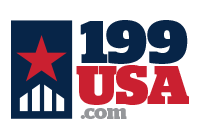When someone logs into Google Adwords for the first time, it is incredibly overwhelming. There are many different options and nuances that can either drive a large number of sales or can cause money to go down the drain. Before you try to play in Adwords’ world, you need to know the basics to get your campaign off the ground. Your basic briefcase of tools for a successful Google Adwords campaign should include the tools Google provides, outside analysis tools, and an understanding of the vocabulary of Google Adwords.
CTA in Ad and Offer
Before you can even land on Adwords, you should have a goal or multiple goals in mind for this campaign. Adwords campaigns should be focused around sales goals as the cost is not worth it if you just want brand awareness. Once you understand what you want to gain from your Adwords investment, you need to create multiple offers structured for Google Adwords format.
This is arguably the most important part of creating an Adwords campaign. You want to construct ads that spur higher click through rates (CTR). A higher CTR will give your Adwords Quality Score a boost that will in turn drive down the costs of your ads. To do this, your ad needs to have a clear and compelling call to action (CTA). The CTA should clearly state the offer you are providing, how the prospect will benefit, and instructions to get the offer. Adwords ads are constructed as follows:
- Headline
- Description line one
- Description line two
- Display URL
Before you get too deep into creating your ad, you need to do your keyword research and write your ads around those search phrases.
Landing Pages
Now that you have your offer, it is time to set up appropriate landing pages that people will be directed to from clicking your Adwords ad. Many people make the mistake of taking prospects who click on ads to the homepage. They have no idea what the next step is when they get on the homepage and you will lose them. Instead, you need to create a landing page the corresponds with your offer. The landing page should match the keywords you are going to research and choose. Make sure your landing page headline corresponds with the ad headline as well.
Keyword Suggestion Tool
The Adwords Keyword Suggestion Tool is the most valuable tool in your Google Adwords briefcase. This is where you will be able to search for keywords that relate to your offer, see related keywords, see how much each keyword costs, and view the search volume. When you are looking at keywords, you want to make sure the search volume is high, but that the cost of each keyword phrase will not outstrip your budget. Additionally, you need to analyze the intent behind each keyword when a prospect types it into Google. Are they Googling to simply perform research or because they want to buy something? You want to stick to keywords people are using to buy.
Kissmetrics has a great guide on how to choose the Keyword Suggestion Tool settings to view the results that will best benefit your campaign.
Max CPC
Part of deciding if a keyword is worthwhile to add to your campaign is comparing the cost per click (CPC) of each keyword with your designated max CPC per your advertising budget. Your max CPC is calculated by conversion rate, profit per customer, and your advertising profit margin. Once you know your max CPC, you can compare to the Adwords CPC for each keyword and see if you can use them in your offers. This formula will help you calculate your max CPC:
Max CPC = (profit per customer) x (1 – profit margin) x (website conversion rate)
Negative Keywords
It sounds negative, but negative keywords will greatly help your ad placement. Negative keywords are keywords that are similar to your ad campaign, but do not describe your offer in the ad. If you do not add negative keywords, then your ad may be served to people who are not interested in your product. That will drop your CTR and make your campaigns more costly.
Phrase Targeting
There are three different types of phrases you can use in your keyword targeting, but most Adwords experts recommend you use all three – exact match, phrase match, broad match. However, when you are bidding for keywords, you want to bid more for keywords that are an exact match and less for keywords that are a broad match.
Conversion Tracking
Once you launch your campaign, it is important to use the Conversion Tracking tool that Google offers on the Adwords platform. This is how you will be able to analyze which keywords are driving sales and which are falling flat. You can find this tool under “Tools and Analysis”. Create a new conversion and then add the code that Google Adwords provides to your confirmation page after a prospect becomes a customer.

